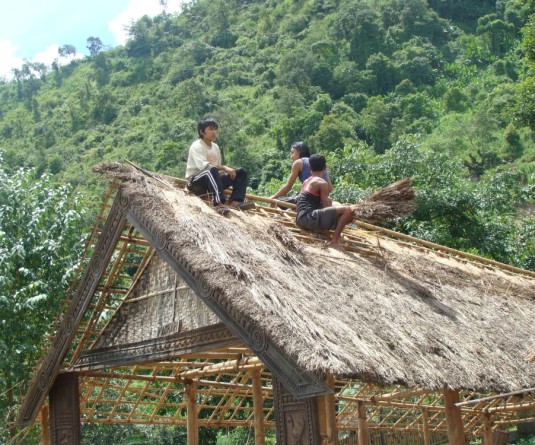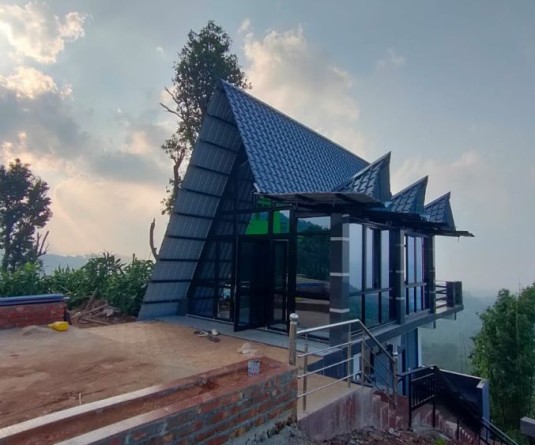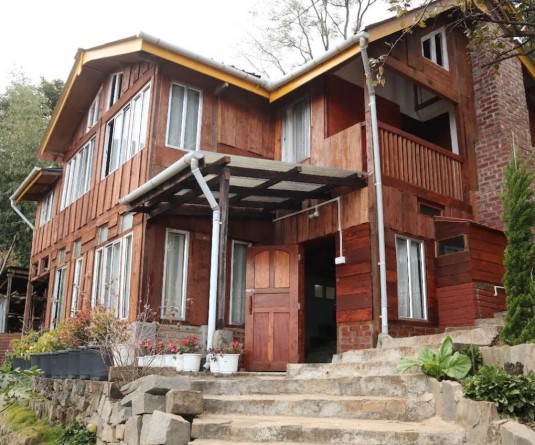Yimchungrü warriors in full traditional attires performing a war dance. (Morung Photo)
Ashikho Pfuzhe
Dimapur | June 3
Nearly 60 years after a Yimchungrü village in the then “Tuensang Free Area” sacrificed its salt springs in deference to the Naga movement, the villagers have since then not drawn a single drop of salt water from these springs.
Huker village (‘huke’ meaning salt in Yimchungrü dialect) in Tuensang district is the historic village where Yimchungrü warriors under the banner of Naga National Council (NNC) scalped the first “enemy’s head” in the bloody saga of the Naga freedom movement.
On March 24, 1955, a band of 300 determined Yimchungrü warriors led by “War leader” M Lakhum, ‘Brig. Gen’ Thsamphu and ‘Angh’ P Hopong, attacked the Indian army soldiers coming from Aghunato at Huker village. In the attack, besides other casualties, it was reported that four Indian soldiers were killed by mere machetes (daos).
Revolutionaries of the area termed this attack as the “First Bloodshed.”
Retribution from the Indian army was swift. Beginning April 8, 1955, where four villagers were gunned down, and the subsequent months, 67 Huker villagers died due to imprisonment and torture and 317 villagers including women and children perished out of sheer starvation while hiding in the jungles. The village was also burnt down a record nine times.
The list of victims is detailed in a book “Reminiscence of the first Indo-Naga War on 24th March 1955 at Huker village.” On March 24 this year, Huker village council in presence of the six tribal presidents of eastern Nagaland, dedicated the site of the “First Bloodshed” as a war memorial and erected monoliths in commemoration of the first “1st Naga Revolutionary Movement.”
The inscription in one of the monoliths is the “First slogan” of Yimchungrü Naga Nationalist Movement.
Another monolith “In Memoriam” contains the inscription “This stone is made to stand in memory of all our fallen heroes and the living dead who had been tortured into insanity and maimed during the first war of Naga freedom struggle in free area.”
Recently, the department of Tourism, Nagaland, also inaugurated a “Tourist Cottage” just below the memorial site.
Recounting the events in the 1950s, 98-yeard-old R Shokheamba from Huker and a former NNC member said that when NNC leader Phizo stepped foot in then Tuensang Frontier Division and spread the idea of “Naga sovereignty”, the Yimchungrüs plunged into the thick of the Naga movement.
“Like others villages, we decided to close down schools till we achieve our goal. Likewise, our village also passed a resolution not to draw salt water from the three salt springs”, the old man said.
Now the salt springs are no longer visible as they are covered by thickets and the village buys iodized salt from the market to flavour their favourite ‘Kholar” dish.
Late M Lakhum, the legendary “Warlord” in the “Reminiscence” wrote: “Many of the young and determined warriors perished. Thousands of innocent public had died like wild leaves. The ornaments and other ancestral assets were burnt to ashes along with houses and granaries. The future of our children had doomed. They could not continue their education. The result was backwardness in all front of developments such as economic, education, social and culture. Today we have been reduced to the lowest strata in the social circle and ramification of our sacrifice for our Naga brethren was a tag of ‘backwardness’ upon us which can be witnessed by all and sundry.”






